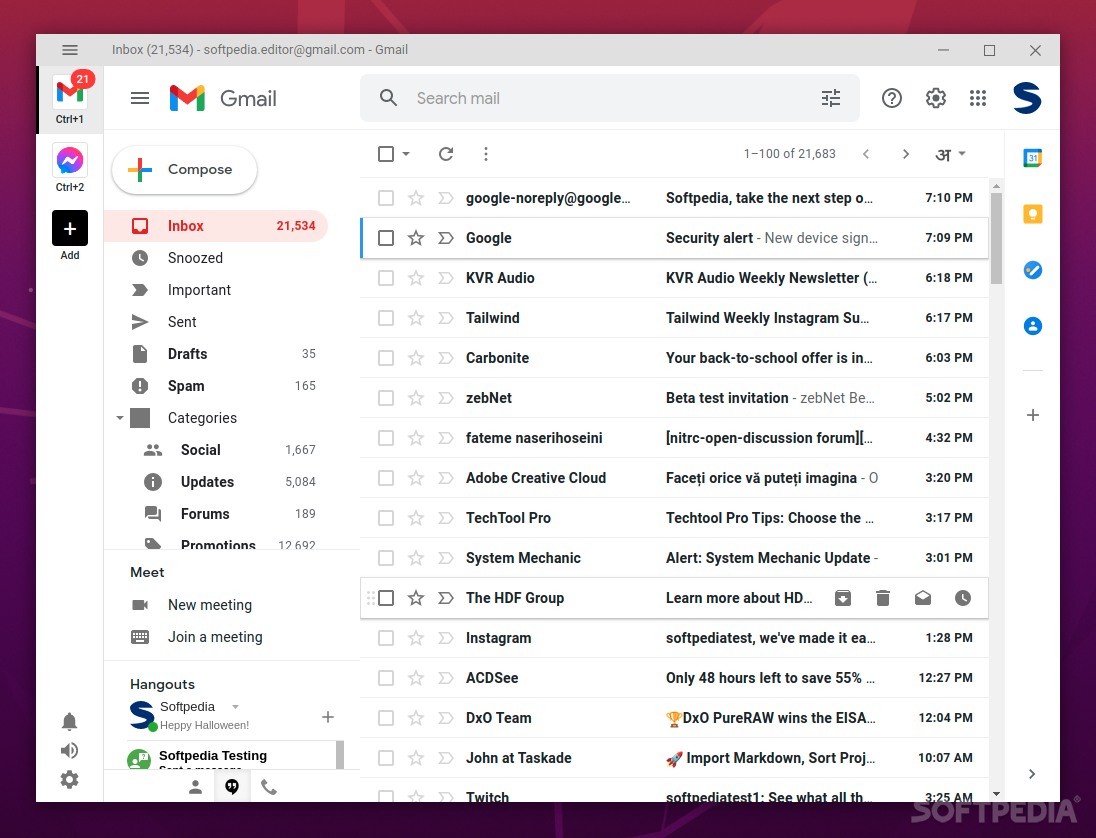

Take productivity to the next level with the help of this all-in-one messaging and email application
What’s new in Singlebox 19.0.0 Alpha 2:
- Fix no handler registered for ‘crx-msg-remote’ (#564)
- Show badge count integer instead of overlay icon on Windows (#563)
- [WEB-46] Add ability to use keyboard shortcut to open/close app (#562)
All-in-one messaging apps are becoming more and more popular. Their main appeal is, of course, that it allows users to handle multiple communication and productivity-related tasks from one place.
Singlebox is one such app and it aims to become the central hub of all your communication and messaging needs. It’s cross-platform (works on Windows, macOS, and Linux) and it’s built using technologies such as Neutron, Electron, Node, and Chromium.
What makes Singlebox worth trying out?
There are a couple of aspects that make or break an all-in-one messaging app such as Singlebox. For starters, a good app of this sort must have support for a wide range of web services.
Thankfully, Singlebox supports all the popular messaging apps such as Telegram, Facebook Messenger, WhatsApp, WeChat, Google Hangouts, Skype, and Microsoft teams, just to name a few.
Not only this, but Singlebox comes with support for a plethora of business, productivity, and office web services as well (the full Microsoft Office and Google suite, Zoom, GitHub, Asana, Slack, Twitch, Spotify, Binance, Dropbox, and the list goes on and on).
A good all-in-one messaging/email app must also be user-friendly. One of the main benefits of Singlebox is its clean and intuitive interface (with all the services neatly packed in the sidebar on the left). Not only that, but Singlebox is also very flexible when it comes to notifications, appearance, and the way it handles accounts.
You can choose themes for the GUI, manage colors, the overall look of the app (via sliders that control the brightness and contrast levels), the size of the sidebar. The app is also capable of using hardware acceleration (when it’s available), tweak various tray-related aspects, how it handles links and notifications, and various hibernation, telemetry, and privacy-related features.
What about the disadvantages?
One of the biggest disadvantages of all-in-one apps is how they tackle multiple web services at once. For example, since Singlebox is built on top of Chromium using a series of web technologies (Neutron, ELectron, etc.), it’s almost a given that it won’t be light on resources.
The fact that Singlebox can become very resource-hungry is not an exception to the rule, as almost all all-in-one apps have this tendency (since most of them are build on top of Chromium and use similar web technologies). In short, it’s a drawback only if you examine Singlebox in “a vacuum.”
Singlebox comes in two variants: Basic and Plus. The Plus tier requires you to pay $25 (one-time payment) in order to access all its accounts and services since the Basic plan is limited to just two.
For this premium, you also get the ability to attach apps to the menu bar/tray (depending on your OS), ad blocking, and the ability to lock apps with passwords or fingerprint-based technologies.
Verdict
All things considered, Singlebox is a very good all-in-one messaging/email app, even though it doesn’t stand out from the crowd of other all-in-one apps out there.
It does a good job of bringing together all the supported web services onto a single screen, it’s user-friendly, it provides enough customization options and decent control when it comes to notifications.
